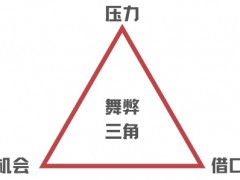據(jù)油氣新聞5月16日消息稱(chēng),根據(jù)Rystad Energy的一份報(bào)告,Covid-19對(duì)上游投資的影響在經(jīng)濟(jì)低迷的頭兩年估計(jì)高達(dá)2850億美元,盡管從2022年開(kāi)始支出將緩慢增加,但在未來(lái)一段時(shí)間內(nèi)不會(huì)達(dá)到危機(jī)前的水平。頁(yè)巖氣行業(yè)受到的影響最大,迄今為止對(duì)成熟資產(chǎn)的常規(guī)勘探和投資受到的影響最小。
2020年2月,在Covid-19開(kāi)始影響全球能源系統(tǒng)之前,Rystad Energy估計(jì)全年全球上游投資最終將達(dá)到約5300億美元,幾乎與2019年的水平持平。我們當(dāng)時(shí)的預(yù)測(cè)表明,2021年的投資將與前一年的水平保持一致。
但是,由于Covid-19大流行在去年第二季度初觸發(fā)了油價(jià)暴跌,勘探與生產(chǎn)公司削減了投資預(yù)算以保護(hù)現(xiàn)金流。這種支出趨勢(shì)在2021年沒(méi)有逆轉(zhuǎn),當(dāng)時(shí)價(jià)格上漲了。與疫情前對(duì)2020年和2021年的估計(jì)相比,我們注意到,去年的支出下降了約1450億美元,到今年年底將損失1400億美元。這意味著Covid-19減少了27%的計(jì)劃投資。
2020年,上游支出被限制在3820億美元,預(yù)計(jì)今年將小幅增長(zhǎng)至3900億美元。Rystad Energy預(yù)計(jì),疫情的影響將是持久的,因?yàn)榧词箯?022年開(kāi)始支出將開(kāi)始增長(zhǎng),它也不會(huì)回到大流行前的5300億美元水平。增長(zhǎng)將是有限的,每年的投資也只會(huì)小幅上升,到2025年,將上升到略高于4800億美元。
在2020年至2021年的兩年間,頁(yè)巖油/致密油投資的絕對(duì)值和百分比都受到了最大的影響,損失了960億美元的預(yù)期支出,即該行業(yè)的39%。與此前的預(yù)測(cè)相比,勘探支出預(yù)計(jì)將減少190億美元,即22%。在新常規(guī)項(xiàng)目上的綠地投資將損失780億美元,即28%,而在現(xiàn)有此類(lèi)項(xiàng)目上的棕地投資將減少920億美元,即20%。
Rystad Energy上游研究主管Espen Erlingsen表示:“由于頁(yè)巖油/致密油既是油氣活動(dòng)下降幅度最大的板塊,也是最需要持續(xù)再投資以保持產(chǎn)量增長(zhǎng)的供應(yīng)來(lái)源,該行業(yè)的產(chǎn)量受到的直接影響非常顯著。”
曹海斌 摘譯自 油氣新聞
原文如下:
Upstream spending, cut by $285 billion in two years
The toll of the Covid-19 pandemic on upstream investments in the first two years of the downturn is estimated at a whopping $285 billion, and although spending will slowly start to rise from 2022, it will not reach pre-crisis levels in the coming period, according to a Rystad Energy report. The shale sector has been the most affected, with conventional exploration and investments in mature assets suffering the least thus far.
In February 2020, before Covid-19 started impacting the global energy system, Rystad Energy estimated global upstream investments for the year would end up at around $530 billion, almost at the same level as in 2019. Our forecast at the time suggested 2021 investments would remain in line with the previous year’s level.
However, as the Covid-19 pandemic triggered a collapse in oil prices during the early part of the second quarter last year, E&P companies slashed investment budgets to protect cash flow. This spending trend was not reversed in 2021, when prices rose. Compared to pre-pandemic estimates for 2020 and 2021, we observe that spending fell by around $145 billion last year and will end up losing $140 billion by the end of this year. This implies Covid-19 removed 27% of planned investments.
Upstream spending was limited to $382 billion in 2020 and is forecast to marginally grow to $390 billion this year. Rystad Energy expects the effect of the pandemic to be a lasting one as – even though spending will start growing from 2022 – it will not return to the pre-pandemic level of $530 billion. Growth will be limited and investments will only inch up annually, rising to just over $480 billion in 2025, when this report’s forecast ends.
Over the two-year period between 2020 and 2021, shale/tight oil investments are the ones most affected in both absolute and percentage terms, losing $96 billion of the previously expected spending, or 39% for the sector. Exploration spending is expected to drop by $19 billion, or 22%, compared to what was previously forecast. Greenfield investment in new conventional projects will suffer a $78 billion loss, or 28%, while brownfield investment in existing such projects will fall by $92 billion, or 20%.
“Since shale/tight oil is both the segment with the highest decline in activity and the supply source in greatest need of continuous reinvestment to keep production growing, the immediate impact on output from this sector has been significant,” says Espen Erlingsen, head of upstream research at Rystad Energy.
免責(zé)聲明:本網(wǎng)轉(zhuǎn)載自其它媒體的文章,目的在于弘揚(yáng)石化精神,傳遞更多石化信息,并不代表本網(wǎng)贊同其觀點(diǎn)和對(duì)其真實(shí)性負(fù)責(zé),在此我們謹(jǐn)向原作者和原媒體致以敬意。如果您認(rèn)為本站文章侵犯了您的版權(quán),請(qǐng)與我們聯(lián)系,我們將第一時(shí)間刪除。







